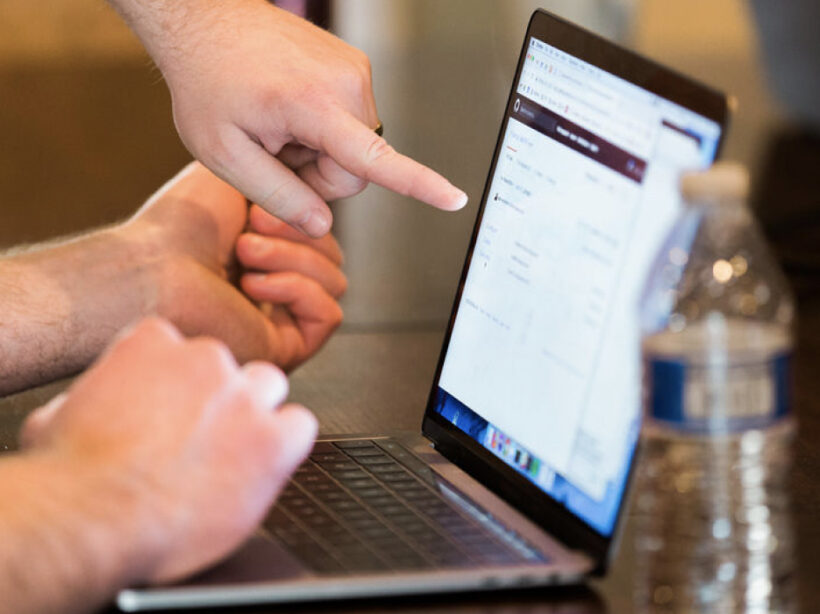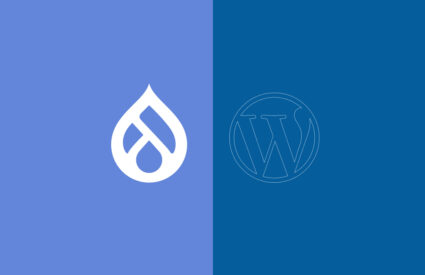This post was last updated in June 2023 to align with Drupal 7’s most recent end-of-life date of January 2025.
Kanopi is a certified Drupal migration partner and can help with your migration needs.
The latest version of Drupal, Drupal 10, is now available. As a Drupal 7 user, you may be wondering what this means for your website.
With Drupal 10’s arrival comes many improvements and changes to the platform. Keeping up with new Drupal releases ensures that your site is secure and that it benefits from the latest advanced functionality. Ultimately, this allows you to serve your website’s audience more effectively.
As a marketing manager or CMO for your organization, it’s important to understand the steps of the Drupal migration process so you can effectively work with your developer while they upgrade your site. This guide covers what you need to know to prepare for a Drupal 7 to 10 migration.
FAQs about the Drupal 7 to 10 Migration
Let’s start with a few fast facts and frequently asked questions about Drupal 7 and 10.
When was Drupal 7 released?
Drupal 7 was released on January 5, 2011.
How long will Drupal 7 be supported?
Drupal 7’s end-of-life date is set for January 2025. After this time, Drupal 7 will no longer receive many bug fixes or security patches. By staying on Drupal 7, you could also risk having faulty modules. Plus, you won’t be able to take full advantage of the new features available in Drupal 10.
When was Drupal 10 released?
Drupal 10 was released on December 14, 2022.
What new features are included in Drupal 10?
Drupal 10’s updates reflect ongoing efforts to modernize the back-end editing experience and provide a streamlined front-end user experience. Specifically, Drupal 10 offers these upgrades and new features:
- New default administrative theme. The Claro administrative theme is modern, mobile-friendly, and optimized for accessibility.
- New default frontend theme. The new Olivero front-end theme also prioritizes accessibility and modernity alongside a streamlined and elegant color palette, form builder, and typography.
- Upgrade from CKEditor 4 to CKEditor 5. CKEditor 5 facilitates a streamlined author experience with the ability to track editing histories, collaborate in real-time, and easily import content from Word.
- More modern JavaScript elements. Drupal 10 swaps large jQuery elements with more performant solutions.
- Upgrade from Symfony 4 to 6 and upgrade to PHP 8. This represents a significant improvement to the PHP scripting language.
When should I switch to Drupal 10?
You should consider switching to Drupal 10 as soon as possible to take advantage of the updated features. After January 2025, Drupal 7 will no longer be supported, so it’s a good idea to plan your migration before then.
Steps of the Drupal 7 to 10 Migration
So, what will the Drupal 7 to 10 migration actually look like? It’s recommended to work with a web developer during this stage. This may either be your organization’s internal web developer or a third-party web development firm.
As a marketing professional, you will mainly play a supporting role in the Drupal 10 migration process. You can help ensure that your site’s SEO rankings are maintained, check that your site’s themes and modules are updated regularly, and run regular tests to ensure a high level of performance. The developer will handle the more complex technical aspects of the migration process.
However, it’s still helpful to understand what exactly goes into a migration and how you can support the development team every step of the way.
With that in mind, here are the steps you and the developer will take throughout the upgrade process:
1. Audit your Drupal 7 site.
A site audit allows you to optimize your Drupal website for performance and security as well as identify data and content types to migrate to your new site.
During an audit, a developer will identify the following elements to prepare them for the migration:
- The content types and structure of your current site. In this stage, you’ll define all of the data that will migrate to the new site and eliminate any broken or unnecessary code.
- The functionality of the Drupal 7 site that needs to be recreated in your new Drupal 10 site. The developer will note any features that will have to be manually redeveloped.
2. Identify necessary redirects for content you’re removing from your site to maintain SEO rankings.
Identify top-performing content and determine whether you’ll need to implement a redirect to maintain SEO performance.
3. Create a backup site copy.
This copy will serve as a migration source and provide a resource for you to reference after your new Drupal 10 site goes live. You can compare your Drupal 10 site to the copy to ensure that everything is in the right place and make adjustments as needed.
4. Review hosting for technical requirements needed for Drupal 10.
Ensure your website host can support the minimum technical requirement of PHP 8.1. You can also take this time to review your host for performance elements such as speed, security, and reliability.
In addition, your developer will ensure that your host provides options for development workflows and site testing. This allows you to stage your site and test new elements and features without affecting the live production environment.
5. Migrate your site’s content.
Content migration informs the structure of the new site, making it the first step in the migration process. Plan your content strategy by determining which content types you’d like to maintain or alter. Then, your developer will initiate the process of migrating your data to your new Drupal 10 site.
6. Upgrade your themes and modules.
Modules are foundational elements of your Drupal website that extend its functionality. Your developer will take the following steps to upgrade your modules and themes in Drupal 10:
- Replace contributed modules with their modern counterparts.
- Identify custom modules and code, verify the functionality required in the new site, and rebuild them.
- Rebuild the theme using the more modern Twig framework.
7. Finalize migration, deploy, and run tests.
Run both automated and manual tests to check your new site. For example, the Kanopi team uses automated code-checking tools like PHPstan and Drupal Rector. These tools allow you to see if your code is functioning as expected.
We also recommend performing manual tests that replicate the user experience. Test your forms, links, navigation, and other site elements to catch any issues and correct them before promoting your new site to audience members.
How a Drupal development expert can help
As mentioned, working with a Drupal developer will make your migration experience smooth and painless. When finding a Drupal development partner to work with, seek experts that can:
- Facilitate a smooth migration process, taking care of the technical details and maintaining data integrity.
- Prioritize accessibility, ensuring all aspects of your Drupal 10 site comply with the Web Content Accessibility Guidelines (WCAG).
- Develop custom modules to ensure that your Drupal website has all the features it needs to serve your audience members effectively.
- Craft a search-engine-optimized website that helps your content appeal to search engines and visitors.
- Implement third-party integrations such as payment processors, security portals, and other tools your organization uses.
- Construct a mobile-responsive theme that ensures your website looks and works great on mobile devices.
- Provide ongoing support, updating content, implementing security updates, and managing performance upgrades as needed.
When searching for the right Drupal partner, it’s helpful to find an organization with experienced developers who contribute to the Drupal project on an ongoing basis. For example, Kanopi Studios offers Drupal development services for all types of organizations, including nonprofits, corporations, healthcare organizations, and higher education institutions.
Each of our Kanopi team members has an average of 11 years of Drupal development experience and several of them are Acquia-certified. We also are a supporting partner to the Drupal Association and regularly contribute to the Drupal Project.
By following these steps and providing your developer with context and insight into your website strategy, you can make the Drupal 7 to 10 migration a simple, painless process. Contact the Kanopi team today if you’re ready to launch the migration process.
Looking for more Drupal development and migration resources? Check out these Drupal guides:
- The Ultimate Guide to Drupal Planning and Development. No matter what version of Drupal you’re currently using, this planning and development guide will help you determine the next steps to take to ensure your site stays updated.
- Drupal vs. WordPress: Which One is Right For You? Considering switching to WordPress rather than upgrading to Drupal 10? Read this guide to determine which CMS is best for you.
- The Top WordPress & Drupal Trends for 2023. Want to learn more about the latest trends for top content management platforms like Drupal and WordPress? This guide has everything you need to know.









